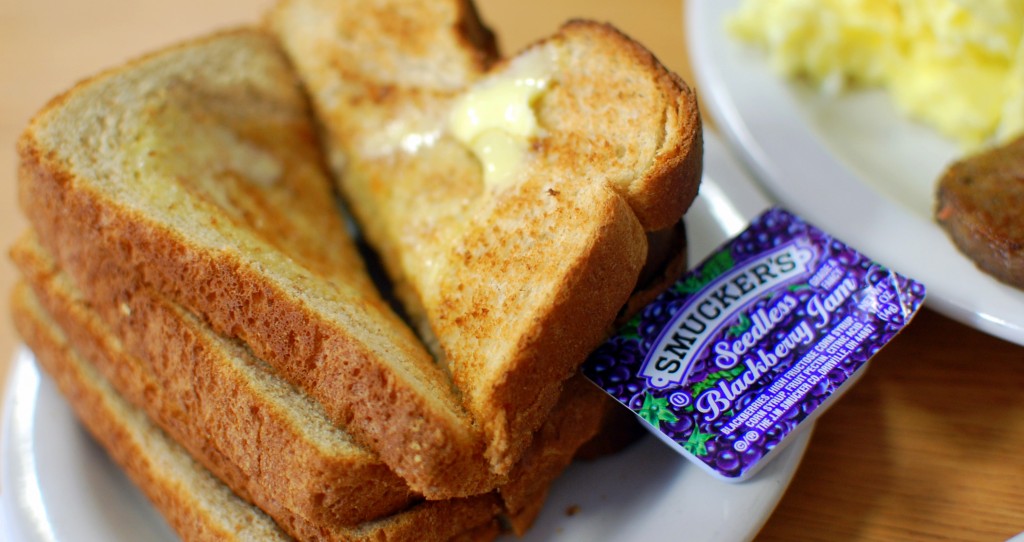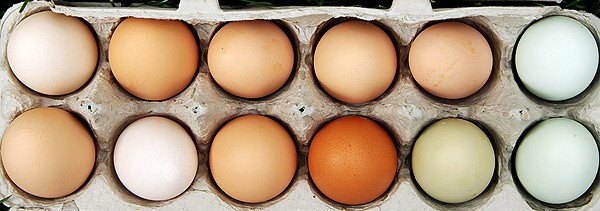Everyone wants to get healthier, but often fail before starting simply because they don’t know where to start. It can be a mine field, so with the interest of simplifying the whole process, I’ll give an overview on how you can plan a healthy diet:
6 basic rules for planning a healthy diet
1. Only eat plants & animals
A healthy diet is, generally speaking, quite simple. All you have to do is eat plants and animals. This is healthy because it is exactly what our body is designed to eat- these foods are naturally occurring, and unadulterated. Now, when I say plants, I don’t mean eating bread, which although derived from a plant product (wheat), isn’t really a plant. There is no ‘bread-plant’, and the same goes for table sugar.
If you’re looking for a substitute for bread (as many people do) you can try starchy root vegetables (such as potatoes) or even go for a ‘primal’ bread which is many times healthier than regular bread, because its made with coconut flour. This is one of the exceptions to the rule of eating plants and animals, which you will eventually identify as you venture down the healthy road, but for now keep the rules simple, and try and limit exceptions. If you need a substitute for sugar, try stevia leaf, which is healthy, and although sweet, does have a little bit of a funny after taste. Plan your meals loosely around this rule, and you are good to go!
2. Use a planner
You might be doing great for a couple of days, but as soon as the cupboard runs dry you either turn to a take-a-way, or a frozen pizza which you had ‘forgotten’ was at the bottom of the freezer. You then slip all to easily back to the diet which you are trying to avoid, so to plan a healthy diet, you need to be organised.
A great place to start when planning a healthy diet is a meal planner, and trust me, it is worth the time, and it can even give you something to look forward too. You can download a basic meal planner here, and get planning your weeks meals so you know what to buy when you’re out shopping. If you only go shopping once a week, then get some frozen veggies to tide you over, as most fresh veg doesn’t last much longer than a few days.
For an idea of a typical days diet, have a look at this example of a days diet, which covers all your nutritional needs for a day at very little cost.
3. Have treats
For both your sanity and to satisfy cravings, a cheat meal once a week is a good thing, and in the scheme of things, is not going to significantly impact your diet/ health goals. Changing diet can be stressful and emotionally taxing for many, and so having the odd cheat meal can be healthy, as long as you don’t let it over spill into the rest of the week. Only order enough pizza for that night for example, so the next morning you aren’t tempted by left over pizza. Put these cheat days into the above meal planner – it gives you something to look forward to.
4. Be prepared with healthy snacks
Everyone is at their weakest when their stomach is rumbling. That’s the call for cheap sugary processed food, and you will start to convince yourself that its not so bad to have a take-a-way tonight, or pick up a pastie in town on the way home. However, just having a small handful of nuts, a square of dark chocolate or an apple is enough to curb these cravings. Even if you don’t crave an apple, having that bit of fibre and sugar in your stomach can kill the craving dead. So go to work equipt with an emergency apple, or have a bit of dark chocolate in the glove box of your car. Cravings do happen with diet changes, so you need to be prepared to combat them.
5. Cook food yourself
There is no such thing as a healthy ready meal. Ready meals are packed full of preservatives, salt and sugar and you never really know what is in them (remember the horse meat scandal?). Buy food which has undergone as little processing as possible; this way you have full control over the ingredients, and the flavour!
6. Do it for 66 days (not 21)
Its a common belief that it takes 21 days to form a habit, but this is thought to originate from anecdotal evidence from plastic surgery patients who say it takes about 21 days to psychologically adjust to their new appearance, and isn’t really true when forming habits. Don’t try a ’21 day diet’ or something along those lines, because more often than not you will be disheartened when it is still difficult to adjust to a healthy diet after 21 days. In reality, it will take around 66 days1 (give or take a week or so) to adjust to a healthy diet, so take this into account when planning.
Foods to avoid
A healthy diet is far from restrictive, but there are a couple of foods which shouldn’t be regularly found in your diet if you’re wanting to be healthy.

Bread & pastas
Whilst I am not opposed to the odd slice of bread with butter on (as long as you are not gluten sensitive), these types of food shouldn’t be a staple part of your diet because they don’t have any nutrition. These foods are high carb/ high sugar transport vehicles for other foods which in simple terms, don’t do your body any good. For example, a slice of 50/ 50 Kingsmill bread contains 16.5g of carbohydrates which have a greater impact on blood sugar than a can of coke3. This has numerous negative health impacts, in particular significantly increasing the risk of developing type 2 diabetes.
Sugary cereals
These are another food which have a severely damaging effect on your blood sugar as breads, some even more. In fact, Cornflakes spike blood sugars levels only slightly less than glucose! So, all cereals should be off the menu. If you want something similar to cereal, porridge is a great low cost option which doesn’t spike blood sugar and has various nutritional benefits including beta-glucans, which have been shown to protect the cardiovascular system2.
Processed meats
It’s processed meats which give meat such a bad name, but processed meats are not meat in the sense that they are a slice of an animal. A sausage which is only 42% meat, and contains glucose, wheat and various preservatives cannot be considered a true meat and has been associated with developing colon cancer on numerous occasions 4,5,6; so try and avoid these foods when planning a healthy diet. Processed meats include bacon, sausages, burgers, kebab meat etc. Basically anything you can’t recognise which animal it’s from.
Foods to embrace
Here are some basic foods which many people would argue are essential when planning a healthy diet, and are certainly a great place to start if you are struggling for ideas.

Eggs
Eggs are a fantastic food, and can be eaten at any meal (although I personally would prefer something a bit more meaty in the evening). For me, eggs are a great way to start the day off, and being high in protein, they give your metabolism a kick-start. Their yolk contains all fat soluble vitamins (A, E, D and K), and can be cooked in such a variety of ways (poached, hard-boiled, fried etc) that they invite a range of meals to keep you interested and experimenting in the kitchen.
Try and go for free range eggs – they only cost slightly more, but you really notice the difference (even better, try and find a local farm shop). Aside from animal welfare reasons, free range eggs are much tastier, have a much richer, creamier, and a brighter yolk, which is even more true for farm fresh eggs.
Feel free to eat these every day if you really like them, and don’t worry about the cholesterol content of them. The majority of cholesterol in the body is created by the liver, and in order for eggs to significantly impact on circulation cholesterol levels you would need to eat around 20 eggs, which isn’t easy.
Leafy veg
When planning a healthy diet, try and include leafy veg such as kale, spinach or Swiss chard. These veggies are extremely high in vitamins, fibre, minerals, and low in sugars. These leafy greens make a great ‘bed’ for some foods (such as poached eggs on spinach, like with eggs Florentine).
Unprocessed meats
Meat is a controversial food when it comes to being healthy, but it is healthy in moderation. Meat contains no simple carbs, is high in protein, vitamins and minerals. The pros and cons of meat are for a whole other post, but to give you an insight into the nutrition of meat, a beef steak will give you 64% of your selenium requirements, 72% of your vitamin B3 requirements (as well as a good amount of other B vitamins) and 52% your RDA of zinc6. Furthermore, eating a high protein diet has been shown to increase satiety8 which can help you to prevent cravings. Meat is good, and organ meat is even better (but not to everyone’s taste).
Root vegetables
Beetroot, sweet potatoes, white potatoes, carrots, parsnips – the lot. These are a healthy replacement for some of the foods to avoid, and they are diverse. Try making some sweet potato fries, beetroot crisps or have some good old roast potatoes instead of chips.
If you have any questions about how to plan a healthy diet or the information in this post, pop them in the comments below and I’ll get back to you.
References
1. Benjamin Gardner. (2012). Making health habitual: the psychology of ‘habit-formation’ and general practice. British Journal of General Practice. 62 (605), 664-666.
2. Kaye Foster-Powell, Susanna H.A. Holt, and Janette C. Brand-Miller . (2002). International tables of glycemic index and glycemic load values. American Journal of Clinical Nutrition. 62 (Jul), 5-56.
3. Othman RA, Moghadasian MH, Jones PJ.. (2011). Cholesterol-lowering effects of oat β-glucan. Nutr Rev. 69 (9), 299-309.
4. Alexander DD. (2010). Processed meat and colorectal cancer: a quantitative review of prospective epidemiologic studies.. Eur J Cancer Prev. 5 (5), 328-41.
5. Santarelli RL. (2008). Processed meat and colorectal cancer: a review of epidemiologic and experimental evidence. Nutr Cancer. 60 (2), 131-44.
6. Larsson SC. (2006). Processed meat consumption, dietary nitrosamines and stomach cancer risk in a cohort of Swedish women. International Journal of Cancer. 119 (4), 915-9.
7. SelfNutritionData. (2014). Nutrition Facts. Available: http://nutritiondata.self.com/facts/beef-products/10525/2. Last accessed 17/12/2014.
8. Thomas L. Halton. (2004). The Effects of High Protein Diets on Thermogenesis, Satiety and Weight Loss: A Critical Review. Journal of the American College of Nutrition. 23 (5), 373-385.
Images courtesy of Abd allah Foteih, feelslikemagic and stevensnodgrass.

